Shocking video showing a crossbow-wielding man threatening to ‘assassinate the Queen in revenge for 1919 Amritsar massacre’ has emerged – after a 19-year-old who scaled Windsor Castle’s spiked fence was sectioned. The video shows a man holding a black crossbow and using a distorted voice as he makes threats down the camera.
The pre-recorded message was reportedly sent by Jaswant Singh Chail to his friends on Snapchat at 8:06am on Christmas Day, 24 minutes before a man was arrested by police inside the grounds of Windsor Castle The suspect, who police have not yet named, was arrested shortly after 8.30am yesterday after he was spotted on CCTV roaming the gardens after scaling an outer wall. He was later sectioned under the Mental Health Act.
The footage shows a figure wearing a black tracksuit and white mask thought to have been inspired by Star Wars – with a framed image of one of the franchise’s obscure villains Darth Malgus on the wall behind the man. He says: ‘I’m sorry. I’m sorry for what I’ve done and what I will do. I will attempt to assassinate Elizabeth, Queen of the Royal Family. This is revenge for those who have died in the 1919 Jallianwala Bagh massacre.
‘It is also revenge for those who have been killed, humiliated and discriminated on because of their race. I’m an Indian Sikh, a Sith. My name was Jaswant Singh Chail, my name is Darth Jones.’
“Darth”
Scotland Yard confirmed detectives are investigating the video as part of a probe into the Christmas Day breach. It is though Chail was drawing parallels to Star Wars in his message, in which he called himself ‘Darth Jones’ – a possible reference to the actor who voice Darth Vader in the original trilogy, James Earl Jones. The Sith worship the dark side of ‘the Force’ and are enemies of the Jedi Knights. Chail sent the video on Snapchat, with the message: ‘I’m sorry to all of those who I have wronged or lied to. If you have received this then my death is near. Please share this with whoever and if possible get it to the news if they’re interested.’ Scotland Yard said detectives were examining the footage which was posted on social media before the ChristmasDay incident at the Queen’s Berkshire home.
Police confirmed a crossbow was found after the intruder was detained in the castle grounds while the Queen was in residence. There is no indication the intruder, who has not been named, was known for making threats to any members of the Royal Family before this week. And sources say that once he had gained access to the royal estate, the teenager ‘didn’t know what to do with himself’ and was quickly arrested.
But it is clear that the incident is being taken extremely seriously. The Metropolitan Police is investigating and has informed the Home Office. Crossbows are often referred to as ‘lethal but legal’ because they require no licence or registration and can be bought on the internet with ease. Police will be looking at how the intruder was able to scale the spiked perimeter fence surrounding the Berkshire castle’s grounds in the first place.
It is believed he had a makeshift ladder to gain access from the Long Walk, which royals frequently use because of its proximity to the Queen’s private apartments. The Long Walk is located in an area of parkland that can be accessed by members of the public. A major internal security review will be initiated as a matter of course, particularly as it follows a series of security scares on the Windsor Great Park estate involving Prince Andrew. In one incident a woman posing as a guest entered his home, Royal Lodge. Senior royals, including the Duke and Duchess of Cambridge and the Duchess of Cornwall, have voiced concern after some of their most trusted police bodyguards were removed in a security shake-up.
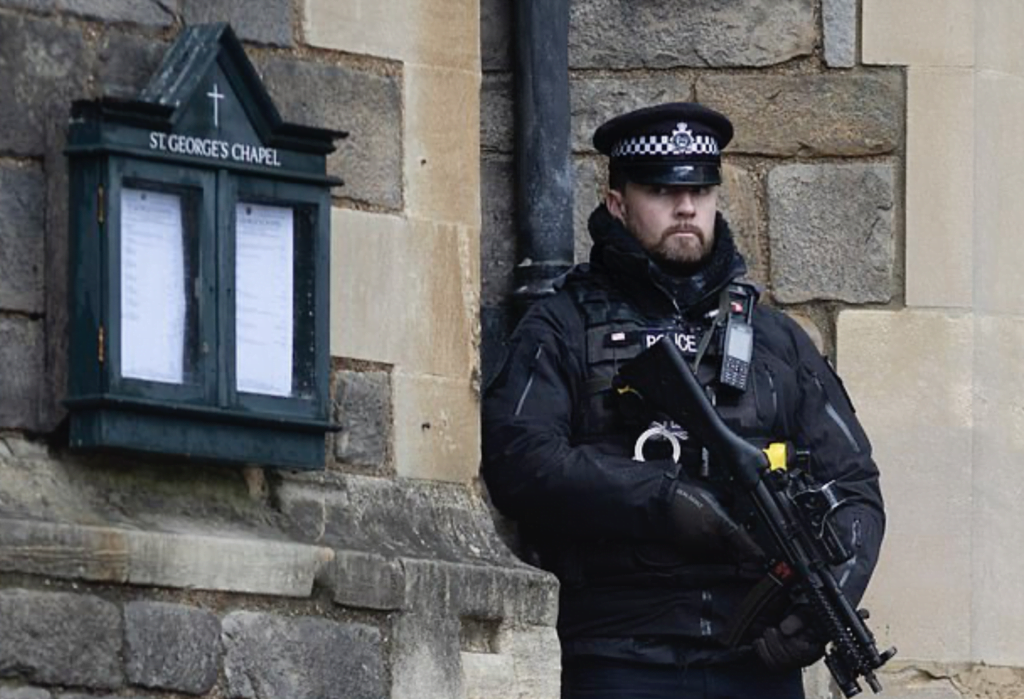
Even the Queen has privately expressed disquiet over changes to the way she and her family are protected, sources said. The latest security scare took place after the suspect with the crossbow was found at 8.30am on Christmas Day, when the Queen would have been at Windsor without her family. Within hours she was joined by a number of senior royals including the Prince of Wales, Duchess of Cornwall and the Earl and Countess of Wessex.
Retired chief superintendent Dai Davies, the former head of royal protection at Scotland Yard, said the incident again highlighted the ‘very serious threat‘ that ‘fixated people and stalkers’ pose. He said: ‘Since the time of George III, 99 per cent of attacks against members of the Royal Family have involved a fixated person, or stalker. And the news that a crossbow was involved actually scares me. They will go through a windscreen, in all my years of crime and catching criminals, it is rare for crossbows to be used for criminal purposes. Anyone knowing the royals were in residence and having a fair idea of their comings and goings, could pose a very real and potentially tragic threat with something like that.’
But he cautioned: ‘It is always a balance between public accessibility to the Royal Family and their ability to live even the semblance of a normal life, with their safety. You can’t turn these royal residence into prisons. And royalty protection is like an onion. ‘There are layers. There would have been a lot of other obstacles for him to get through before he even got near a member of the Royal Family. It is clear he was picked up by CCTV and apprehended at the first possible opportunity. Troubling as the incident is, in this case the security worked.’ In a statement the Metropolitan Police said: ‘A 19-year-old man from Southampton was arrested on suspicion of breach or trespass of a protected site and possession of an offensive weapon.
‘Security processes were triggered within moments of the man entering the grounds and he did not enter any buildings. ‘Following a search of the man, a crossbow was recovered. The man was taken into custody and has undergone a mental health assessment. He has since been sectioned under the Mental Health Act. ‘Enquiries into the full circumstances of this incident are being progressed by Metropolitan Police Specialist Operations.’ Security at Windsor Castle has been beefed up in recent years, sources have said. A review was carried out in 2003 after self-styled comedy terrorist Aaron Barschak broke in during Prince William’s 21st birthday party.
Amritsar
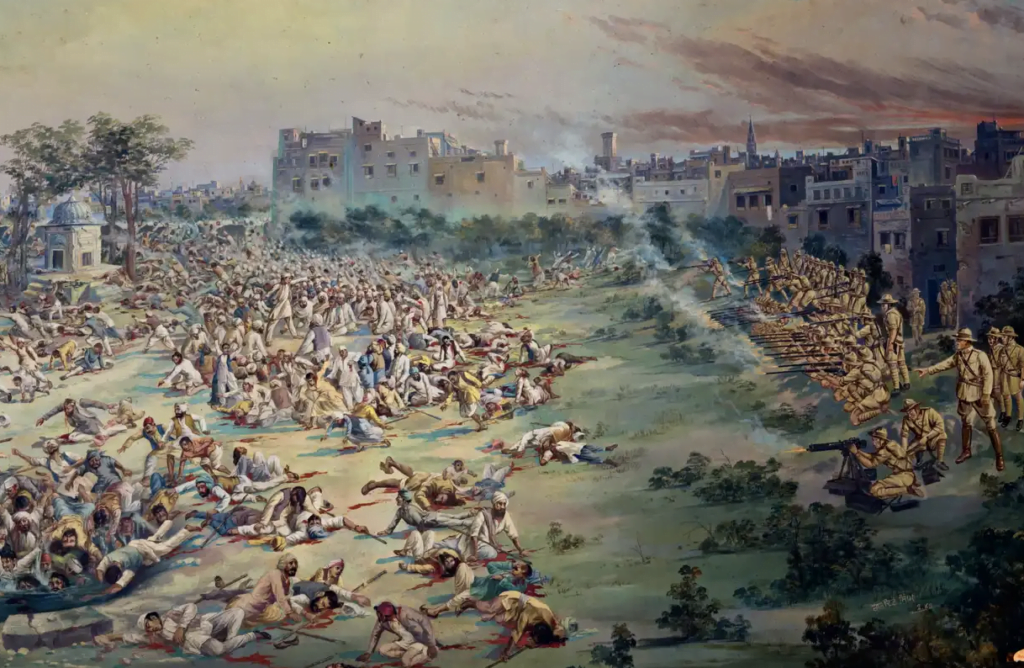
In Amritsar, India’s holy city of the Sikh religion, British and Gurkha troops massacre at least 379 unarmed demonstrators meeting at the Jallianwala Bagh, a city park. Most of those killed were Indian nationalists meeting to protest the British government’s forced conscription of Indian soldiers and the heavy war tax imposed against the Indian people.
A few days earlier, in reaction to a recent escalation in protests, Amritsar was placed under martial law and handed over to British Brigadier General Reginald Dyer, who banned all meetings and gatherings in the city. On April 13, the day of the Sikh Baisakhi festival, tens of thousands of people came to Amritsar from surrounding villages to attend the city’s traditional fairs. Thousands of these people, many unaware of Dyer’s recent ban on public assemblies, convened at Jallianwala Bagh, where a nationalist demonstration was being held. Dyer’s troops surrounded the park and without warning opened fire on the crowd, killing several hundred and wounding more than a thousand. Dyer, who in a subsequent investigation admitted to ordering the attack for its “moral effect” on the people of the region, had his troops continue the murderous barrage until all their artillery was exhausted. British authorities later removed him from his post.
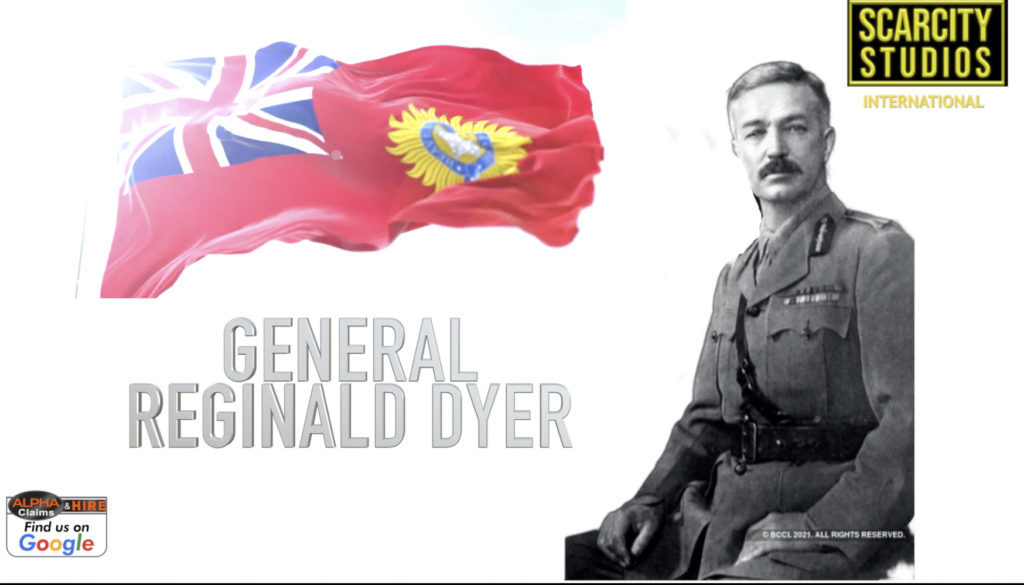
The massacre, also called the Jallianwala Bagh Massacre, stirred nationalist feelings across India and had a profound effect on one of the movement’s leaders, Mohandas Gandhi. During World War I, Gandhi had actively supported the British in the hope of winning partial autonomy for India, but after the massacre he became convinced that India should accept nothing less than full independence. To achieve this end, Gandhi began organizing his first campaign of mass civil disobedience against Britain’s oppressive rule.
Dyer reached the public space known as Jallianwala Bagh, which was surrounded on all sides by houses and walls. Here, he found himself face to face with a crowd of more than 20,000 people, whom he assumed to be bloodthirsty rebels preparing to overrun the British parts of the city. Within 30 seconds of deploying his troops, and without warning, Dyer gave the order to open fire. From the vantage point of one of the nearby rooftops, an Indian eyewitness watched the ensuing carnage:
“Shots were fired into the thick of the meeting. There was not a corner left of the garden facing the firing line where people did not die in large numbers. Many got trampled under the feet of the rushing crowds and thus lost their lives. Blood was pouring in profusion. Even those who lay flat on the ground were shot, as I saw the Gurkhas kneel down and fire. As soon as the firing stopped, the troops and officers all cleared away.”
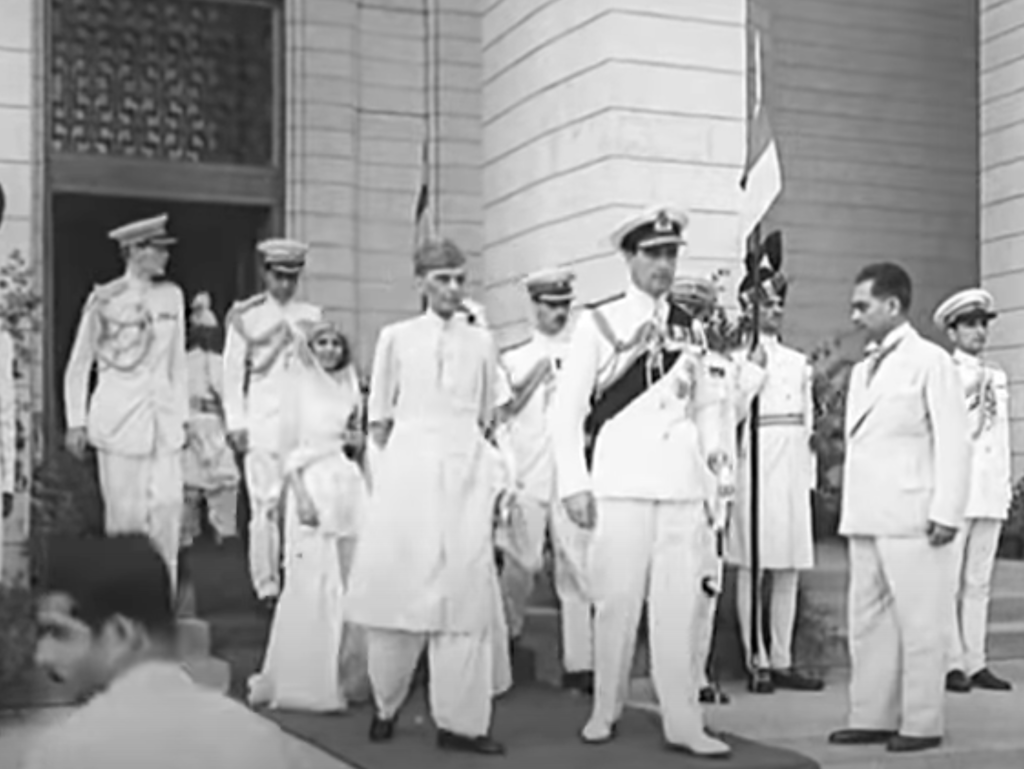
The shooting lasted for 10–15 minutes. By the time the guns fell silent, Jallianwala Bagh was littered with the bodies of the dead and dying. Although the authorities were never to concede that more than 379 were killed, a more realistic assessment would suggest the death toll was between 500 and 600. The wounded likely amounted to three times as many.
Dyer had been disastrously mistaken in his threat assessment. The crowd was not formed of armed rebels but local residents and villagers from the surrounding countryside, who had come to listen to political speeches or simply to spend a few hours in this public space. It was composed of Hindus, Muslims and Sikhs. Most were men and young boys, including some infants. Only a few women were present.
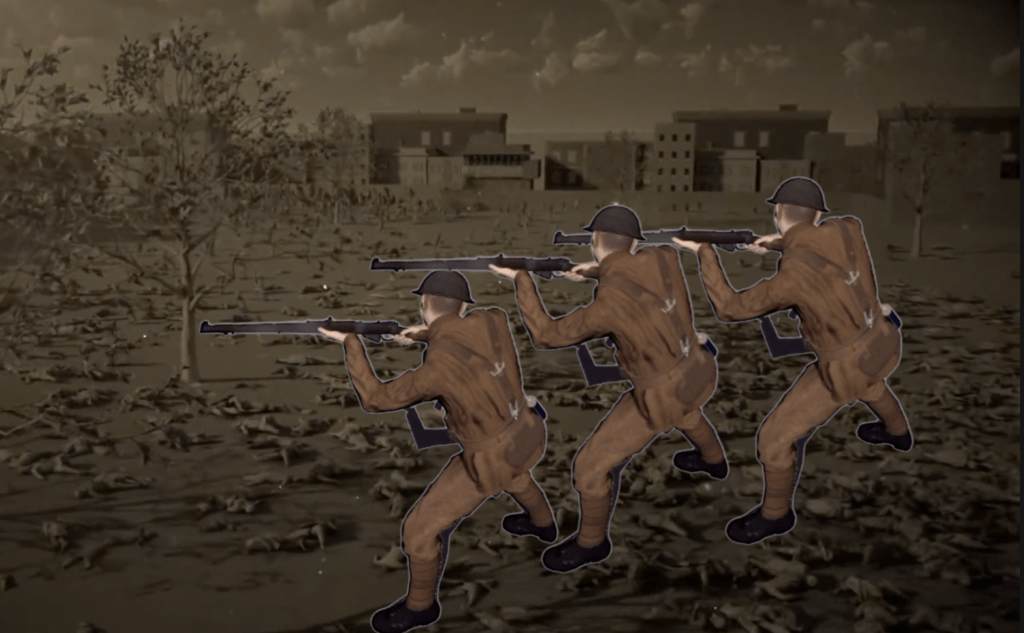
When later called upon to justify his actions, Dyer characterised the situation in Amritsar as a military operation – one with a punitive logic all its own: “I fired and continued to fire until the crowd dispersed, and I consider this is the least amount of firing which would produce the necessary moral and widespread effect it was my duty to produce if I was to justify my action,” he said. “If more troops had been at hand, the casualties would be greater in proportion. It was no longer a question of merely dispersing the crowd; but one of producing a sufficient moral effect, from a military point of view, not only on those who were present but more specially throughout the Punjab. There could be no question of undue severity.”
Details of the massacre, and of Dyer’s justification, only emerged months later, but caused irreparable damage to the relationship between moderate Indian nationalists, including Gandhi, and the British government. Although many colonial officials and conservatives rallied to Dyer’s defence, the general was forced to retire from the army, with the government officially denouncing his actions in 1920. During a debate in the House of Commons, then secretary of war Winston Churchill famously described what happened at Jallianwala Bagh as “an episode which appears to me to be without precedent or parallel in the modern history of the British empire. It is an event of an entirely different order from any of those tragical occurrences which take place when troops are brought into collision with the civil population. It is an extraordinary event, a monstrous event, an event which stands in singular and sinister isolation.”
Revenge
The General Dyer-led massacre at Amritsar’s Jalianwalla Bagh, in 1919, left an indelible dent on the psyche of millions of Indians but one survivor waited 21 years for revenge by killing the man he held responsible for the atrocity: the then lieutenant governor of Punjab Province, General Michael O’Dyer.
Born on December 26, 1899, in Punjab’s Sangrur district, Udham Singh was among the thousands of people who had gathered at the Jalianwalla Bagh on the fateful day of April 13, 1919, to commemorate the annual Baisakhi festival. The city of Amritsar had already been on the boil over arrests of national leaders. General Michael O’Dyer charged Brigadier-General Reginald Edward Harry Dyer with the task of restoring “law and order.” Wary of the anger that had been brewing among the Indian people against the colonial government’s repressive measures, including forced conscription and levying of heavy taxes, General Dyer banned public gatherings and ordered indiscriminate arrests of people besides other punitive measures.
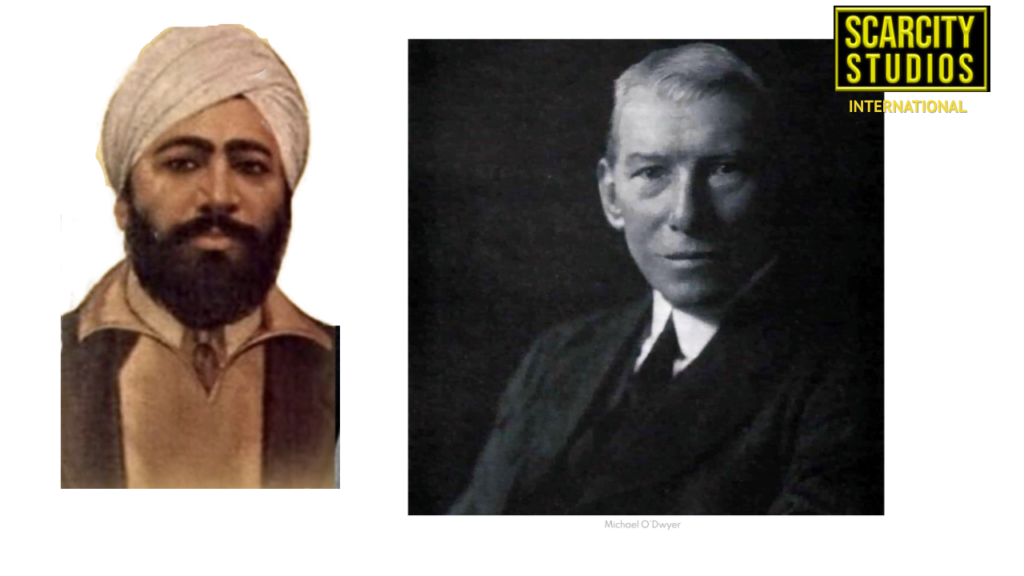
Udham Singh, 20 at the time of the Jalianwala Bagh massacre, soon travelled to East Africa to work as a labourer before moving to the United States of America, where he met members of the Ghadar Party, a revolutionary group formed by immigrant Punjabi-Sikhs for India’s independence from British rule.
On March 13 1940, Udham Singh shot General Michael O’Dyer at a joint meeting of the East India Association and the Central Asian Society at Caxton Hall, London. Udham Singh did not flee from the spot and was arrested for the killing. During his trial, Udham Singh said he had waited 21 years to kill General Michael O’Dyer as the British official “wanted to crush the spirit of my people, so I crushed him.” Udham Singh was hanged four months later and his mortal remains were handed over to India in 1974.

